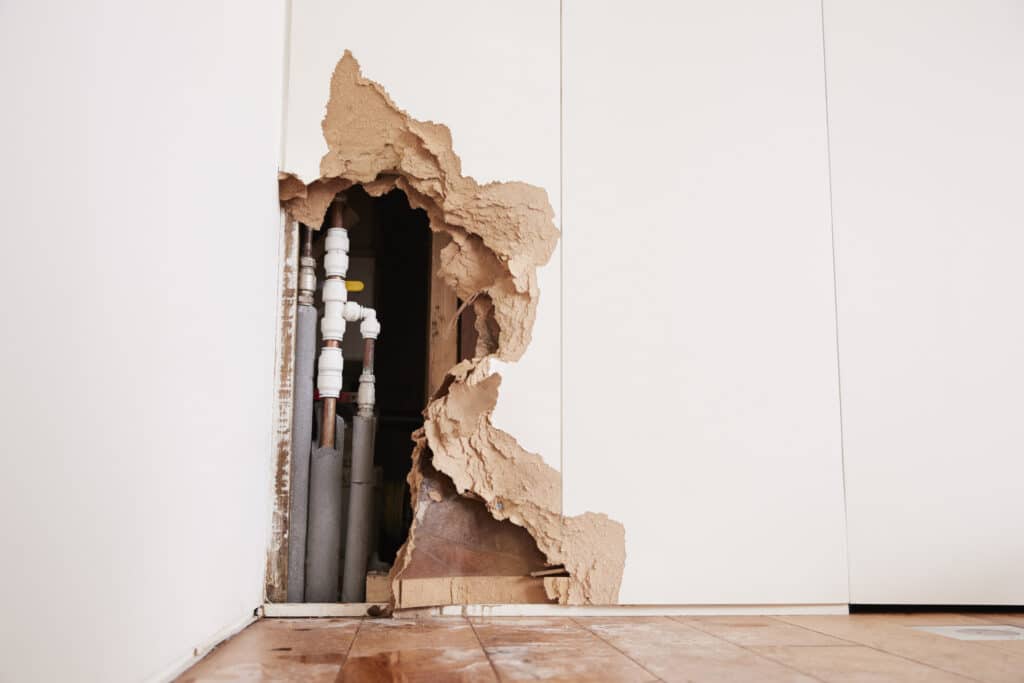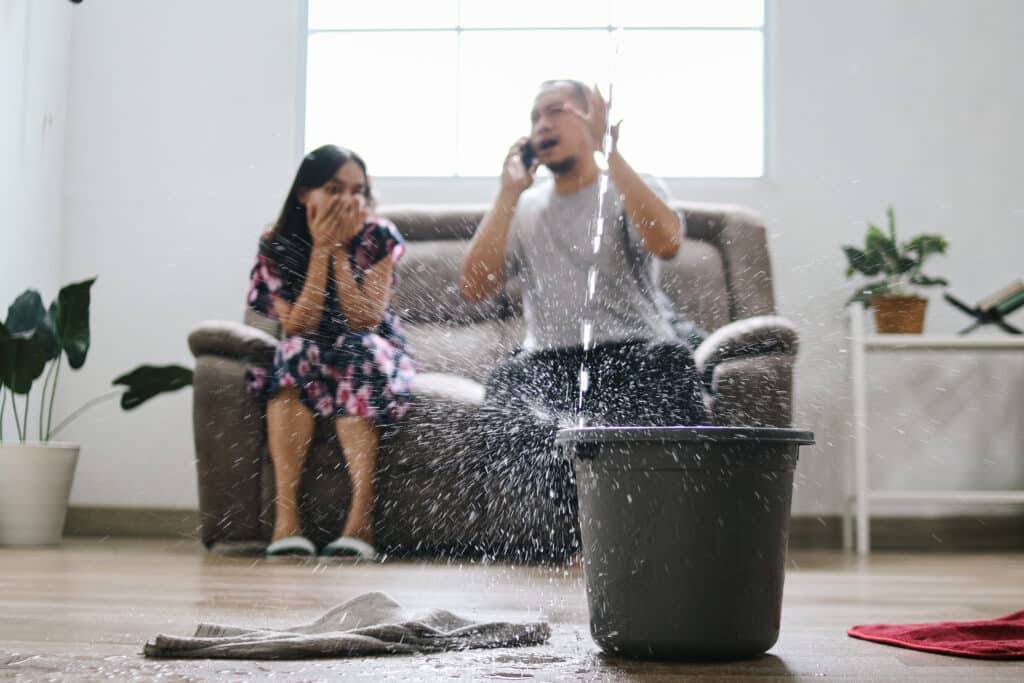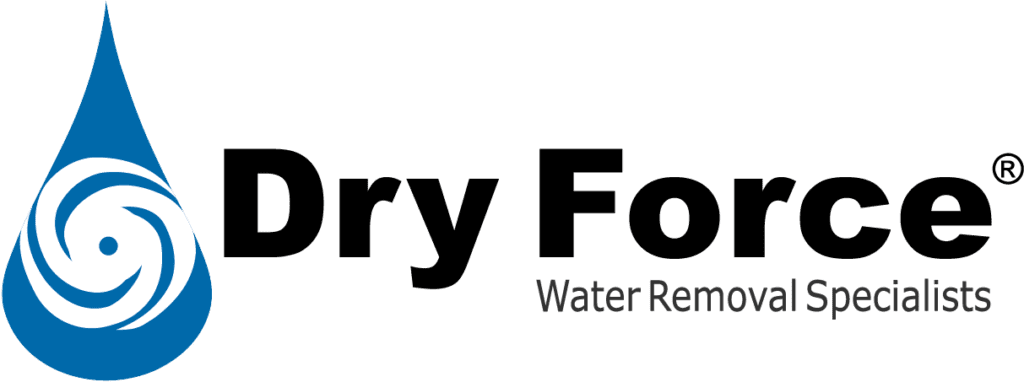
Your house is a place for relaxation and comfort. But home water damage can make comfortable spaces uninhabitable within mere hours. Every minute counts during a flood or water leak, so it is important to address moisture-related damage as soon as possible.
If you have an emergency, Dry Force is always nearby and ready to help. We offer 24/7/365 emergency service and response times of 60 minutes or less.
Our team prioritizes your safety and comfort, which means educating our clients to prevent and minimize water damage. The following blog overviews common spots for home water damage and how to reverse the devastation with Dry Force’s help.
Table of Contents
What are the most common spots for water damage in your house?
The Bathroom
Your bathroom has several fixtures connected to your home’s water supply. With so many pipes running into your bathroom, there are many ways for bathroom water damage to occur.
The following fixtures are especially prone to water leaks:
- Toilets
- Showers
- Sinks
- Faucets
- Bathtubs
- Bidets
If you notice a leak in your bathroom, it must be addressed immediately. Even minor leaks can turn into major problems. Over time, water damage leads to devastating issues such as mold growth, poor air quality, and structural damage.
Water damage in your bathroom can go unnoticed, especially since showers cause water to puddle on the floor. But if you detect water stains, mold growth, or unusually high humidity, call Dry Force. We will provide a free evaluation and use thermal cameras to pinpoint the source of your bathroom water damage.
Toilets
Toilets can leak around their base or in their tank, so it is important to check both. Be on the lookout for ghost flushing, which is when the toilet flushes on its own. Also, pay attention to how often your toilet runs. If it is constantly running, you may have a leak.
Showers/Tubs
Your shower or tub may have a leak if you notice the following issues:
- Water stains on the ceiling below an upstairs bathroom
- Mold on floors or walls near a shower/tub
- Vinyl flooring is curling
- There is standing water on the bathroom floor
You can test your shower or tub for leaks by splashing water around it. Pay close attention to where the floor and fixture meet, inspecting the caulk for damage or mold.

The Basement
Basement water damage is one of the most common forms of home water damage. Leaking water can enter your basement via a foundation leak, water heater, water softener, or flood. Basement water damage can be devastating, especially if your foundation is affected. It can weaken your home’s structural integrity and lower indoor air quality.
Water Heaters
The clearest sign of a leaking water heater is pooling water or puddles around its base. You might also notice corroded parts, strange hissing and popping noises, higher utility bills, or fluctuating water pressure.
Dry Force can inspect your water leak to determine the cause. Our home water damage restoration team will clean up the excess water and restore a healthy environment.
The Attic
Cracked roofs are a common entry point for water damage, especially in Texas, where hail storms and high winds put shingles to the test. We recommend inspecting your attic for pooling water and high humidity after a storm. If neglected, attic water damage will cause mold growth and water stains on the ceilings
Rain Damage
Before you climb up to your attic, inspect your ceilings for water stains. These are giveaway signs that your attic has suffered rain damage. Once you have checked your ceilings, look for damp insulation and rafters in your attic. Other signs of attic water damage include discolored walls and musty odors.
The Kitchen
Kitchen water damage can come from some of the most common appliances:
- Refrigerator
- Dishwasher
- Sink
- Water cooler
Water in the house is never a good sign, but it is especially concerning in the kitchen. A water leak can cause several health issues, including respiratory illnesses. Contact Dry Force’s home water damage restoration team before your utility, hospital, and reconstruction bills start to pile up.
Sinks & Faucets
You should check three places around your sink: the spout, the faucet base, and under the sink. If you notice drips, puddles, or mold, your kitchen is at risk of water damage.
Refrigerators
Cracked drain pans and leaking water lines are common culprits behind refrigerator leaks. But you should also be aware of humid temperatures and leaving the door open too long. Humidity can clash with the refrigerator’s cold surfaces—such as that open door—to create condensation.
Dishwasher
Your dishwasher may leak for several reasons, such as a faulty door seal or a damaged drain line. There are numerous warning signs of a leak, so look out for the following:
- Puddles
- Wet walls or cabinets
- Mold and mildew
- Gurgling and popping noises
- Corroded exterior
Below Walls & Foundation
Foundation water damage is especially dangerous to homeowners. It can go unnoticed for weeks or months, causing thousands of dollars in damage.
Your home has a system of pipes beneath its foundation and inside its walls. Just one leak can cause catastrophic damage. Excess water can weaken your home’s foundation and cause wall water damage. Side effects of wall water damage include mold growth, structural collapse, and poor air quality.
But how can you identify a house water leak before it’s too late? We recommend conducting regular checks in your basement. A check can be simple: listen for trickling water, test for foul odors, touch surfaces to ensure they are solid, and look for water spots.
Invisible Leaks
If you suspect an invisible leak, conduct a regular check as described above. If you find water stains, hear trickling water, or smell musty odors, contact Dry Force for professional home water damage restoration.
We use thermal cameras to detect invisible leaks and trace them to a source. Once we find the source, we can mitigate the damage and restore your property.
The Garage
Excess water causes general deterioration of spaces. To find water damage in your garage, look for:
- Discoloration on surfaces
- Puddles
- Uncharacteristic rust
- New cracks in the garage floor
Garage water damage might occur for the following reasons:
- Home drainage problems
- Poor garage ventilation
- The garage door is poorly sealed
- The roof and gutters are damaged
Clogged Gutters
Damaged and clogged gutters may cause water to pool around your garage. This excess water will then seep into the garage floor or rust the door. If you notice that your gutters are sagging, spilling over, or riddled with pests, they are likely clogged.

Hire Dry Force for Water Damage Repair Services in Texas
For over 20 years, Dry Force has helped Texas homeowners recover from home water damage. We combine old-fashioned hard work with cutting-edge technology, providing superior care 24/7/365. Our team is always nearby and ready to help, promising response times of 60 minutes or less.
We are Texas’s go-to water damage restoration company. Since 2003, we have completed 40,000+ water restoration projects and 6,000+ water reconstruction projects. Our team reduces your stress during the restoration process, sending Texas’s most knowledgeable technicians to your home.
Contact us for a free evaluation today.
